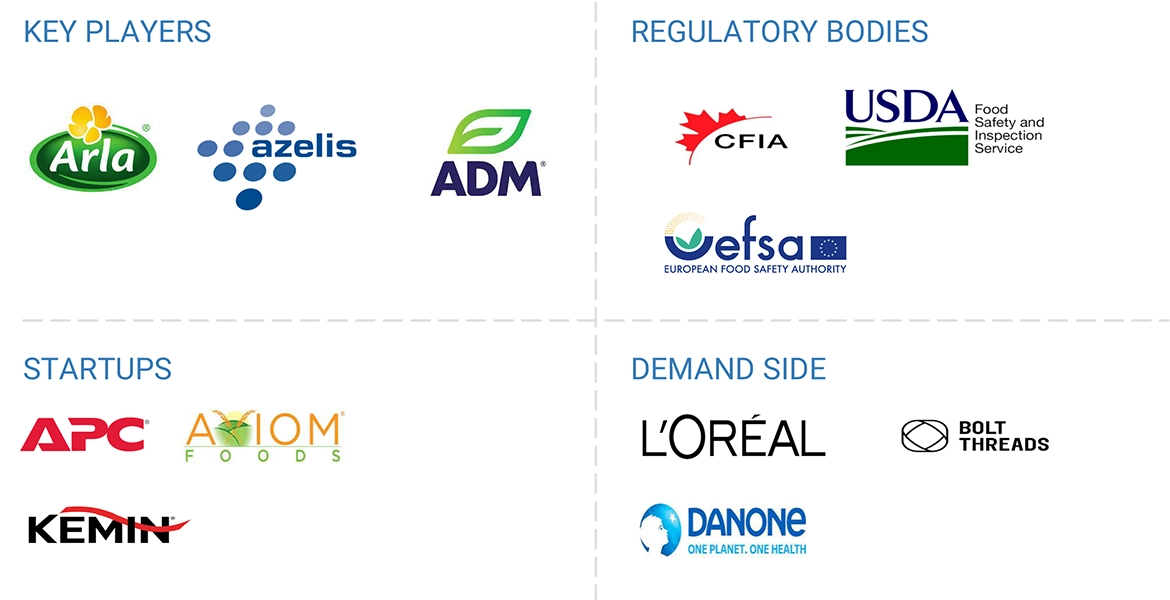The Protein Hydrolysates Market is on a strong growth trajectory. Valued at USD 3.3 billion in 2023, it is projected to reach USD 4.3 billion by 2028, expanding at a healthy CAGR of 5.6%. This momentum reflects the rising demand for high-quality, bioavailable protein solutions across industries ranging from food and pharmaceuticals to agriculture and cosmetics. The growing protein hydrolysates market size underscores how essential these products have become in global nutrition and wellness.
What are Protein Hydrolysates?
Protein hydrolysates are created through enzymatic hydrolysis, a process that breaks down proteins into smaller peptides and amino acids. This enhances their digestibility and bioavailability, making them easier for the body to absorb. Thanks to these properties, protein hydrolysates have become an essential ingredient in:
- Sports nutrition: Promoting faster muscle recovery and performance.
- Infant formulas & medical nutrition: Offering rapid, easily digestible amino acids for vulnerable populations.
- Pharmaceuticals & cosmetics: Leveraged for their unique functional benefits.
- Agriculture: Used as organic fertilizers to boost plant growth and nutrient absorption.
This versatility highlights why protein hydrolysates are becoming indispensable across diverse sectors and expanding their protein hydrolysates market share year after year.
Animal-Sourced Proteins Lead the Way
Animal-based protein hydrolysates dominate the market due to their complete amino acid profiles and superior nutrient availability. These attributes make them the preferred choice in:
- Sports nutrition: For rapid absorption and muscle recovery.
- Medical nutrition: Especially for elderly populations and patients with dietary needs.
- Food manufacturing: Offering improved solubility, emulsification, and enhanced texture in products.
As global health and fitness trends continue to surge, animal-sourced protein hydrolysates are expected to remain at the forefront despite the rising interest in plant-based alternatives.
Enzymatic Hydrolysis: Driving Innovation
Among production methods, enzymatic hydrolysis has emerged as the key growth driver. By breaking down proteins into smaller, more digestible components, it ensures higher bioavailability and nutrient utilization. This makes enzymatically hydrolyzed proteins especially attractive for:
- Nutritional supplements
- Functional foods
- High-performance beverages
The demand for functional and fortified foods is only accelerating, further cementing the role of enzymatic hydrolysis in shaping the industry.
Europe’s Strategic Role in Market Expansion
Europe represents a dynamic hub for protein hydrolysates, with growth powered by rising demand for whey protein in infant nutrition. Leading protein hydrolysates market companies in the region include:
- Koninklijke DSM NV (Netherlands)
- FrieslandCampina (Netherlands)
- Tate & Lyle plc (UK)
- Arla Foods amba (Denmark)
While Western Europe shows signs of maturity, Eastern Europe offers new opportunities, fueled by increasing protein-rich food demand and strategic partnerships—such as Azelis Group’s collaboration with BENEO to expand its clean-label ingredient portfolio.
Key Market Players
Prominent players shaping the global protein hydrolysates market include:
- Azelis Group (Belgium)
- FrieslandCampina (Netherlands)
- Tatua (New Zealand)
- Arla Foods amba (Denmark)
- ADM (US)
The protein hydrolysates market is entering an exciting phase of expansion, propelled by health-conscious consumers, innovation in functional foods, and applications spanning multiple industries. Whether in sports recovery, infant care, or sustainable agriculture, protein hydrolysates are increasingly becoming the protein source of choice.
Frequently Asked Questions
Q1. What is driving the growth of the protein hydrolysates market?
The market is growing due to rising demand in sports nutrition, infant formulas, medical nutrition, and functional foods. Its bioavailability and digestibility benefits also make it popular in pharmaceuticals, cosmetics, and agriculture.
Q2. Which source dominates the market—animal or plant?
Animal-sourced protein hydrolysates currently dominate thanks to their complete amino acid profile and superior nutrient quality, although plant-based options are gaining traction.
Q3. Why is enzymatic hydrolysis so important in this market?
Enzymatic hydrolysis enhances nutrient absorption by breaking proteins into smaller peptides, making them easier for the body to digest. This process also provides functional properties that improve food quality.
Q4. Which region is expected to see strong growth?
Europe, particularly Eastern Europe, is seeing strong growth. Demand for whey protein in infant nutrition and clean-label ingredients is fueling expansion in the region.
Q5. Who are some key players in the global protein hydrolysates market?
Major players include Azelis Group, FrieslandCampina, Tatua, Arla Foods amba, and ADM, among others.

